Disaster films and science fiction are two genres that go well together, like ham and eggs one with a little more destruction, and this is because if a particular disaster isn’t something as simple as a towering building on fire or a rogue wave swamping an ocean liner, then it would be up to scientists to figure out how to put a stop to it, but one important ingredient to pull off such a genre mash-up is in having a decent budget and that is something producer Sam Katzman rarely ever had when putting his productions together, and The Night the World Exploded was no exception.
For decades science has been trying to predict natural disasters, whether it be through sensors placed to monitor seismic activity or satellites tracking weather patterns, science marches on to protect us oblivious citizens and in The Night the World Exploded we are introduced to Dr. David Conway (William Leslie) who has built a machine that can, apparently, predict earthquakes and he and his team, consisting of Dr. Ellis Morton (Tristram Coffin) and the lovely Laura Hutchinson (Kathryn Grant), have discovered that a serious quake is going to hit California. Needless to say, the Governor refuses to order an evacuation based on information provided by an untested device, which the film surprisingly treats as a realistic reaction, but when the earthquake hits, as predicted, Conway and his friends are thrust into a race against time as he believes that in a matter of days the world could explode.
I was able to predict they would only be able to afford stock footage of an earthquake.
The plot of The Night the World Exploded depends heavily on the viewer having little to no understanding of geology, or science in general, as we watch Dr. Conway and friends run around in a futile attempt to save the world from a mysterious new mineral he calls Element 112 which is, apparently, the cause of the earthquake and if left unchecked will trigger more and more quakes until eventually, the world explodes. Turns out that mankind’s pillaging of natural resources has left this new element exposed to the air and when left to dry it expands, heats up and then explodes with a titanic force. To say that all the scientific doublespeak in the world wasn’t going to sell this premise is a fair statement, the script and visuals on display certainly have a hard time selling that premise, but even worse is the fact that if what Conway says was true there would be no way for mankind to actually reverse the process in a matter of days – their plan involves every country in the world flooding areas where the element is being exposed by seeding clouds and blowing up dams – and I don’t care what their magical “Datatron” computer says, the human race is doomed.
“I know I've made some very poor decisions recently, but I can give you my complete assurance that my work will be back to normal. I've still got the greatest enthusiasm and confidence in the mission.”
One standout element in the film, that isn’t a volatile geological threat, is that of the character Laura Hutchinson, known to her friends as Hutch, as she is depicted as a smart and capable woman who the team actually depends on, sadly this is undercut by her wanting to quit her job to marry some dude named Brad because Conway is too hung up on science to see that she is in love with him, and not this Brad person. Hutch is willing to race into danger along with the men, like a true hero, and actress Kathryn Grant gives the character more of a backbone than what you’d find in most female characters found in this genre at the time, sure, she will still have to be rescued at one point by the men but she is never relegated to being just a background character, one whose primary job is to make the coffee.
Well, she does make the coffee but it’s not her primary job.
Stray Observations:
• This film could be considered the reverse of The Monolith Monsters as the rocks in that film expanded when wet while the minerals in this movie grow and heat up when left out to dry.
• Hutchinson freezes up while climbing down the rope ladder into the cavern pit, because, you know, she’s a girl.
• The Assistant Secretary of Defense points out the logistical problems of gathering all the world’s top scientists together, such as getting them all passports, as if something that trivial would even be an issue when the world is about to explode.
• We keep hearing about Hutch’s boyfriend Brad but we never see him, I’m guessing he’s the male equivalent of having a girlfriend in Canada.
• Conway places a sample of the explosive mineral inside a globe of the Earth, to demonstrate to his fellow scientists its destructive nature, but I’m not sure a department store globe is a proper analog to the actual Earth.
Are we sure Conway isn’t just a sixth-grade science teacher?
The key to one's enjoyment of The Night the World Exploded will depend greatly on how much pseudo-scientific babble you can take as that is pretty much all this film has to offer, mostly due to the fact that the filmmakers had no budget to provide anything else, and even the film’s title is a big lie as not only does the world not explode but none of the events even take place at night. What does work for the film is that all that scientific mumbo-jumbo is delivered by a more than capable cast of talented actors, ones who manage to remain earnest and sincere while providing a surprising amount of gravitas in what is clearly a cheapie B-picture. The Night the World Exploded may not contain much in the way of spectacle, and will likely disappoint most fans of disaster movies, but with the confident direction of Fred F. Sears as well as Benjamin Kline’s great cinematography, the end result was a film that turned out better than it had any right to be.
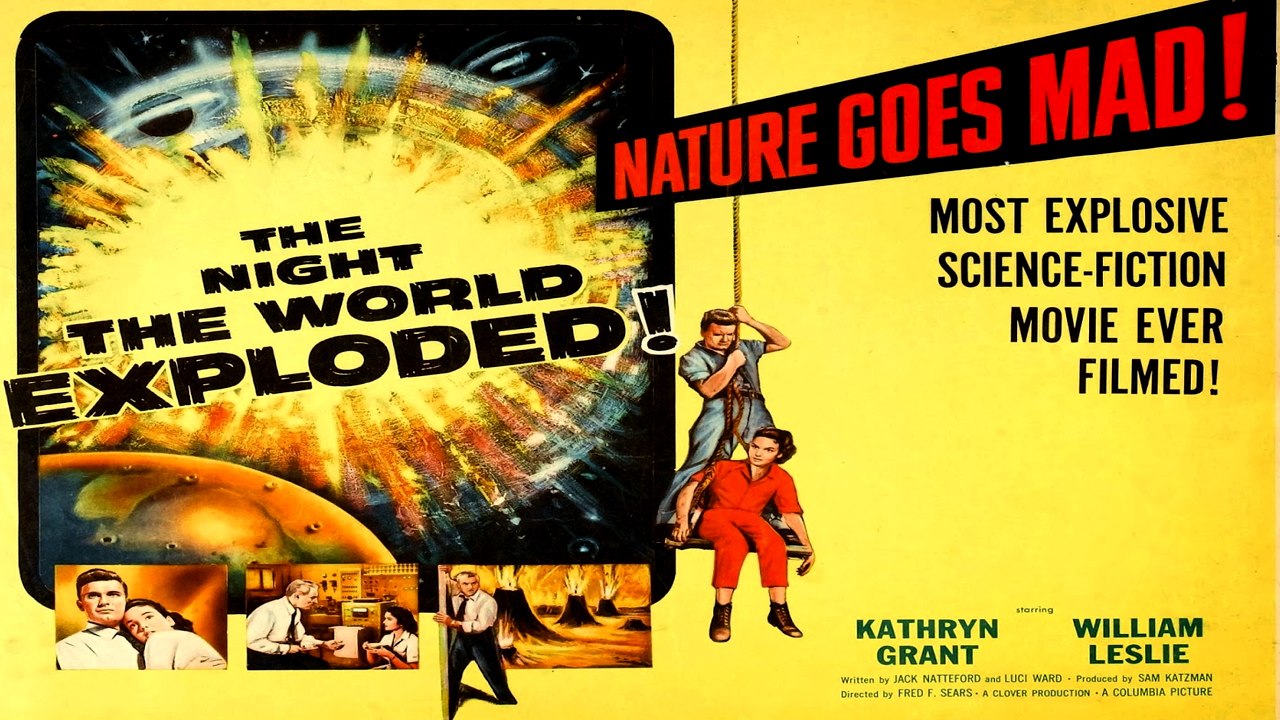
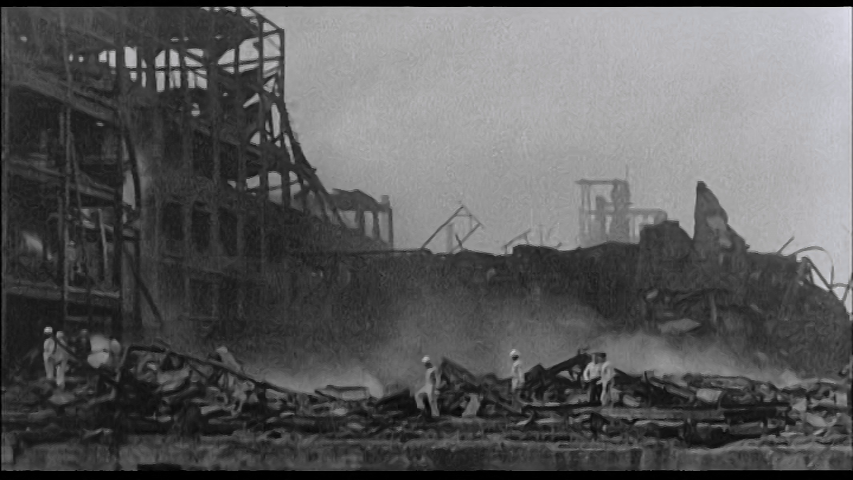
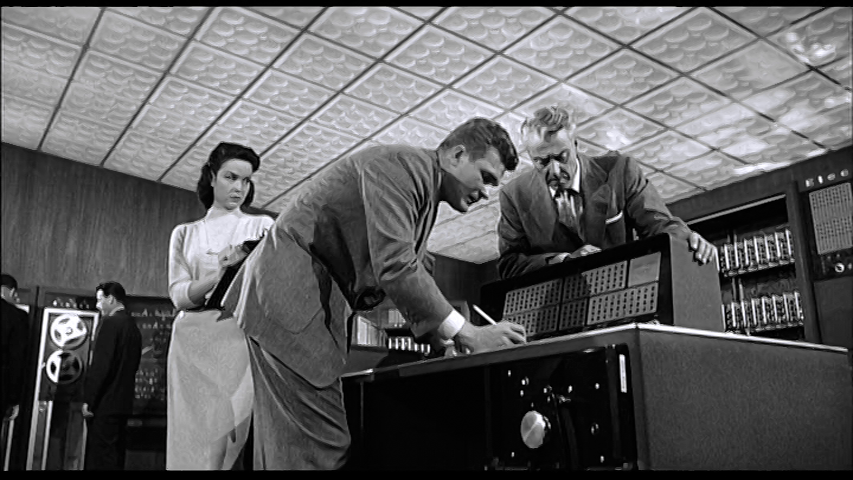
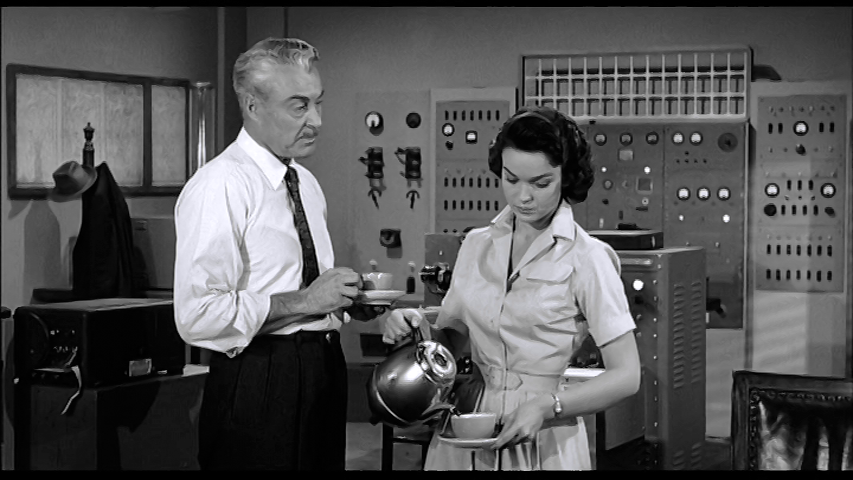
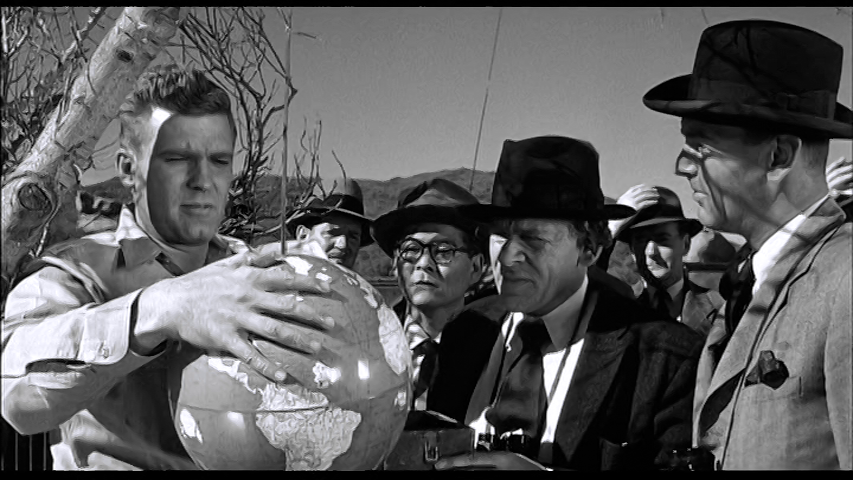

No comments:
Post a Comment